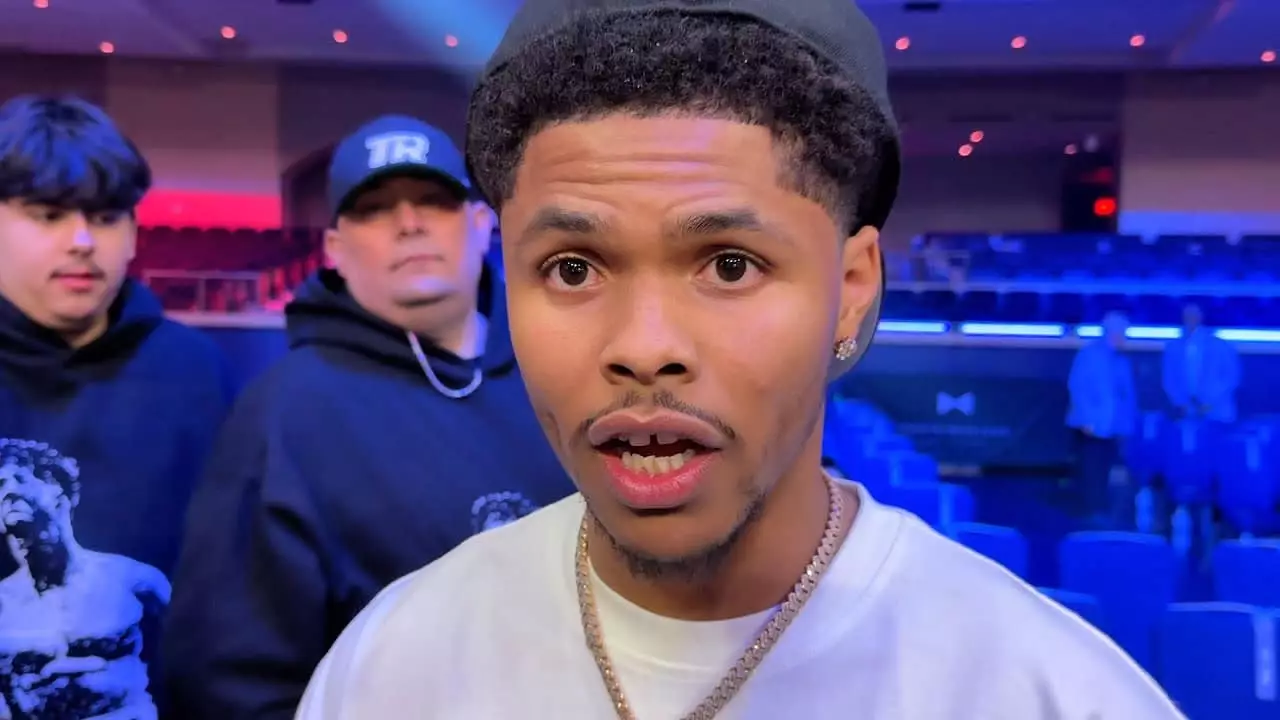In the high-octane world of professional boxing, the psychological state of athletes can be as pivotal as their physical prowess. The bout between Gervonta Davis and Lamont Roach on March 1st at the Barclays Center in Brooklyn highlighted this intricate reality. Shakur Stevenson, an up-and-coming star with ambitions of his own, weighed in on Davis’ performance, asserting that he believed Davis was mentally stable during the fight. However, a closer examination of Davis’ actions raises questions about whether he truly was present in that ring or merely going through the motions.
Davis, known as “Tank,” has an impressive record of 30-0-1 with 28 knockouts, but his latest showing suggested a puzzling lack of focus. Observers noted that he often looked at the crowd rather than his opponent, as though he were captivated by a world outside the boxing ring. This behavior rekindles questions about the psychological warfare inherent in boxing; how much of a fighter’s performance is contingent on their mental sharpness? The knee Davis took in the ninth round, coupled with an apparent call for a timeout, painted a picture of a fighter whose mind might have been wandering. It felt like a diversion from the serious nature of the contest—was he distracted or merely testing the waters of an ongoing struggle?
Rivalry and Resentment: The Battle Beyond the Ring
Stevenson’s critique poses a larger question about the rivalry between him and Davis. Some fans speculate that Stevenson perceives Davis not just as an opponent but as an obstacle to his aspirations of stardom. After all, the boxing landscape thrives on narratives, and the tension between these two fighters adds an additional layer of intrigue. Stevenson’s impassioned remarks about Davis might very well stem from a desire to stir the pot, almost as if trying to evoke a reaction or a definitive showdown.
However, it’s crucial to consider whether Stevenson’s perspective is clouded by personal ambition. Could his commitment to disparaging Davis’ recent performance be rooted in a subconscious need to elevate his own status? If Davis symbolizes significant financial opportunities, Stevenson stands to gain immeasurably should they ever face off in the ring. The allure of wealth and recognition could easily influence statements made by athletes who share a competitive rivalry.
Furthermore, Davis’ reluctance to engage with potential opponents like Stevenson casts doubt on whether the latter will ever get his coveted match against the established star. Instead of risking a fight against Stevenson, whose recent opponents can be classified as less formidable, Davis may prioritize bouts that promise higher stakes and drawing power.
Stevenson’s Approach: Playing it Safe or Smart Strategy?
Stevenson’s recent career decisions spark heated debate. By choosing to face lower-tier fighters like Josh Padley and Artem Harutyunyan, he has avoided the risk of a devastating loss while paving a safe path towards a potential heavyweight payday. Critics argue that this strategy is a mere façade to protect his reputation and marketability. In the cutthroat arena of boxing, every match matters, and the allure of standing atop the rankings can force fighters into precarious situations.
But this raises a noteworthy point: are fighters better off taking risks to boost their visibility, or is a calculated approach preferable in a sport fraught with unpredictable outcomes? For Stevenson, the temptation to rest on his laurels could become a double-edged sword; while he secures safe bouts for potential financial rewards, his reputation as an elite competitive fighter may also suffer.
It’s also relevant to highlight Stevenson’s commentary on Roach, whom he believes will prevail in a potential rematch with Davis. This belief stems not just from confidence in Roach’s abilities but also from his personal experience sparring with him. This suggests a complexity in Stevenson’s approach to matchmaking—not merely looking to shine in individual performances but potentially setting up future engagements based on predicted outcomes.
The Marketing Ploy: Building a Career Amid Controversy
Finally, the question of marketability looms large over Stevenson’s career. With mixed perceptions about his fighting style and engagement level, fans may argue that unless he aligns himself with high-caliber adversaries like Davis, his platform will remain stunted. He appears to be sidelining himself into the undercard, where noise is often lost amid more prominent fighters.
Fighters like Stevenson have an infinite array of decisions at their disposal, each carrying the weight of both potential success and failure. While the prospect of battling established stars like Gervonta Davis fuels his ambitions, the current trajectory underlines a crucial lesson in boxing: the intersection of mental fortitude, risk management, rivalry, and marketing efficacy will dictate not only one’s success but also their legacy in the sport.


Leave a Reply